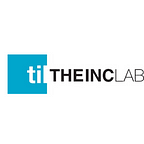Creativity and The Future of Work: Perspectives from a TIL Summer Intern
Hi. I’m Evan Thomas, a TIL South intern.
I’ve been thinking a lot about creativity and what it means for the future of work. First we want to start off by defining crearivity.
What does it mean to be creative?
Fundamentally, creativity is the production of novelty. It is the creation of something original, and exploration into the unknown. Creativity occurs when consideration is given to divergent and normally ignored streams of thought. In other words, creativity is the byproduct of a brain set free to ruminate and wander.
Although typically associated with areas like fine art or music, creativity is a faculty that has use in any scenario, including professional environments and workspaces. In fact, it could be argued that creativity is one of the most valuable characteristics of a successful work environment.
Why is creativity so valuable?
It is valuable because novelty is a primary driving force not only in industry and business but in humanity. Creation of the new is a core part of what it means to be and feel human. On a more practical level, creativity can help find solutions that better fit project criteria and customer wants. At TIL, creativity is a vital part of day-to-day life in our effort to produce faster and more efficient and cost-effective solutions.
What does creativity look like in practice?
One example of how creativity is utilized at TIL is in software design. Often, there are multiple ways to achieve a given task through a programming language, but one solution is usually more readable and efficient than the others. Creativity can help TIL coders find these solutions when they may not be obvious.
Another way that creativity is encouraged is by giving the workforce the liberty to go about work and having the freedom to bring new ideas to the table. Work can happen in multiple places, not just the office. Periodically taking walks is something I like to do throughout the work day as a way to stay active, enjoy the outdoors, and rest my mind. While working at TIL I have had the freedom to do this, and it has helped increase my focus and think of more potential solutions to problems. It’s beneficial for clients too when we can come back to the table with a clear mind and new ideas.
TIL also encourages creativity by intentionally cultivating an environment of acceptance. Make it clear to employees that making mistakes is part of being human and that when a mistake is made it should be treated as an opportunity to avoid another, potentially worse, mistake in the future. This kind of attitude allows employees to freely brainstorm and suggest “wild” ideas that they may otherwise fear to bring up if perfection is expected. An attitude of determination can also promote creativity. When faced with a challenging problem, determination often is a path to creativity. With determination we are willing to consider ideas or thoughts that may have been previously dismissed.
One of the most important principles for productivity in both a personal and professional context is to “make it a habit.” Creating a habit minimizes effort and maximizes results. Although creating a habit for something as abstract as creativity is difficult, here are a couple tips to make it easier without overthinking it:
● Encourage employees to brainstorm or think individually before a meeting. Allowing time before a meeting can result in a greater difference between ideas than if employees brainstorm together during the meeting.
● Reward curiosity, especially “What if…,” “Why…,” and “What would happen if…,” Allowing open-ended questions like these can open up new possibilities not previously noticed.
Lastly, creativity cannot exist without discipline. Creativity as a stand-alone concept is great, but at some point you have to get practical — things still need to get done. How do you make sure that productivity is maximized while still being creative? One of the best ways to do this is to set a deadline for tasks to make sure that too much time is not devoted to the creative process and that at some point decisions are made and the task accomplished. Another way is to set a fixed amount of time spent brainstorming, so that a decision must be made after a period of time.
I’m learning a lot in my time at TIL and I know it’s an organization that has encouraged me to be creative and pushed me to be more disciplined and results oriented. For more information about TIL and the amazing work we do for our clients, check out our social media and our website.
- Evan
